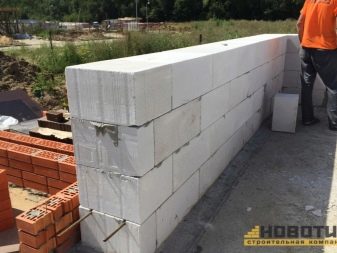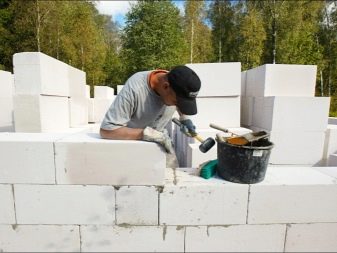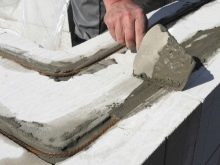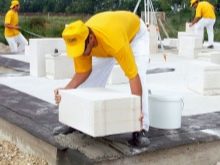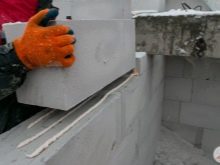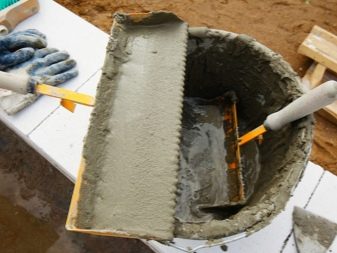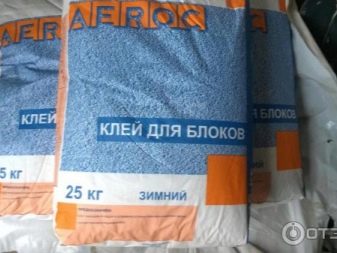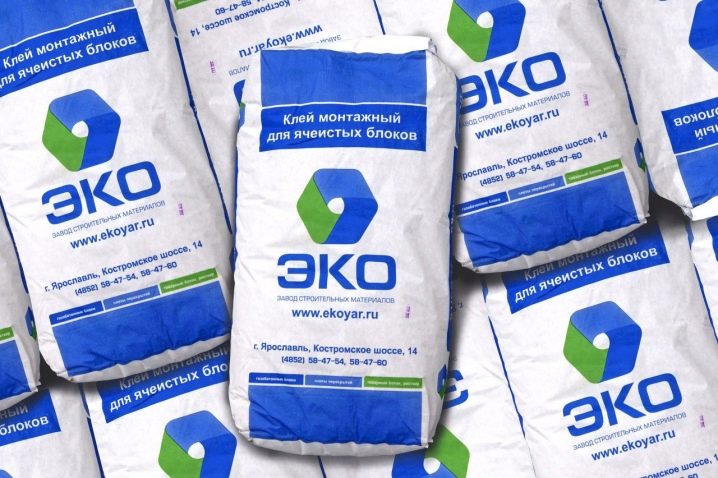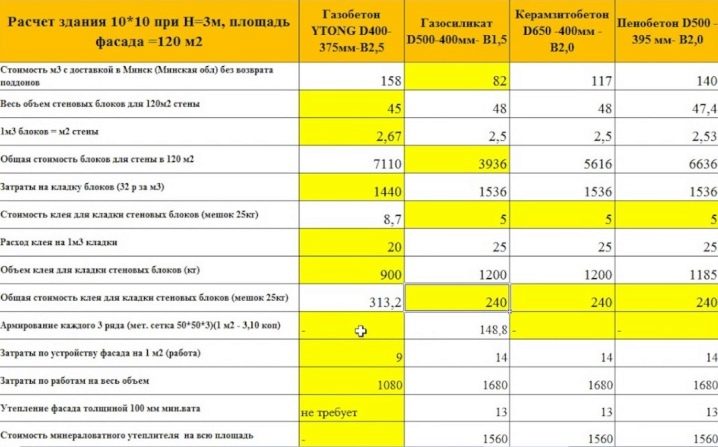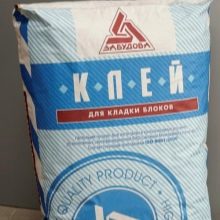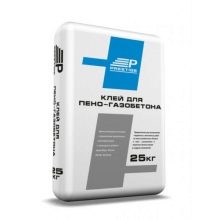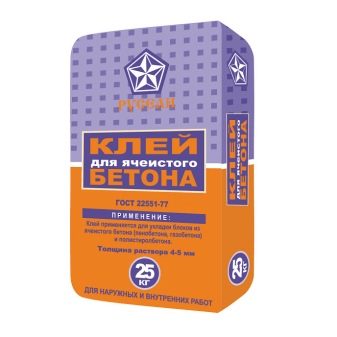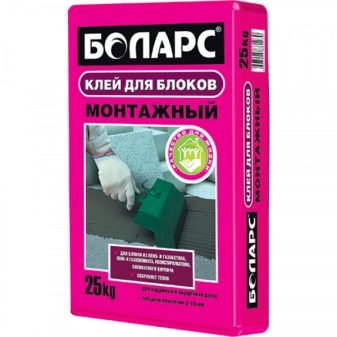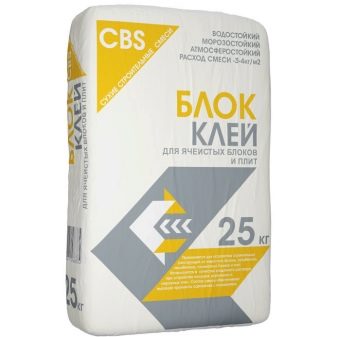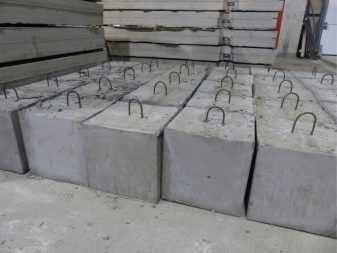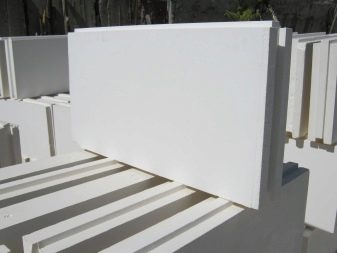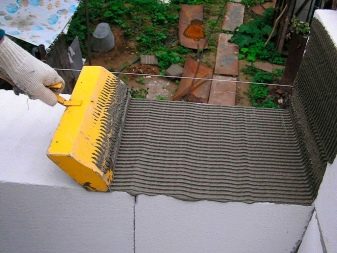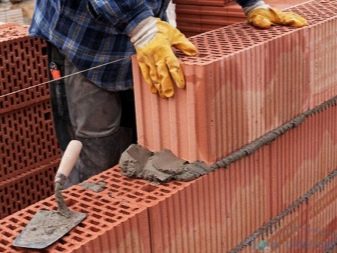Block Adhesive: Selection Criteria

Block adhesive is a mixture of several components designed to join building block parts. The use of such a composition facilitates the task of erecting internal walls and partitions, especially from light slabs and structures made of gas and foam concrete.
Special features
Glue is a chemical composition that provides adhesion between various materials. If earlier the walls were erected mainly from bricks and its analogues, then today the usual construction methods are considered to be too laborious, including due to the high cost of the material.
Building lightweight blocks today have become the predominant materialsignificantly pushing the traditional brick. Having small dimensions and convenient to use, they are joined using adhesive mixtures. For block structures, specialists develop numerous adhesives and foams for joining in the process of building walls.
The obvious fact is that the quality of individual components fully determines all the performance characteristics of the adhesive composition. As a rule, in its production using various grades of cement, sand, organic and other plasticizers. The composition of the mounting adhesive depends on which blocks you want to connect to each other.
The most common in the production process - cement-sand composition can not be prepared on its own, at a batch special technologies are used. Therefore, the mixture is available in bags weighing up to 20-25 kg.
Specifications
On sale there are only two types of adhesive mounting mixture.
- For winter and temperatures not lower than +5 degrees Celsius. Winter versions of the compositions can be used at any time of the year, including in the summer. At the same time, the limit of frost resistance is still limited to -15 degrees, it is better not to carry out installation work in stronger frosts.
- If you have a second variation (summer), then the mixture will not be suitable for cold pores, a rapid cracking of the layer will occur. The warmest type of glue is polyurethane foam for wall plates and block structures with ridges and grooves. It provides additional waterproofing and reduces thermal conductivity.
Consumption
In practice, the situation is often not the case. Much depends on how strong the curvature of the surfaces is. The higher it is, the more layers are required. At the same time, weather conditions are an important factor.
Taking into account all the nuances, on average, a cube of building blocks requires one bag of the mixture, that is, 25-30 kg. And sometimes it can go up to 36 kg of adhesive. Therefore, in the absence of much experience in laying, it is better to purchase mixtures with a margin.
For durable bonding of porous structures with cells need more moisture, so the consumption of adhesive per 1 m2 will be higher. To minimize all costs, calculate how much glue is needed to lay the cube of foam blocks. For example, standards for aerated concrete provide for no more than one and a half kilograms of glue per 1 m3. At the same time the seam turns out extremely thin - no more than 1 mm.However, to do this, the surface must be perfectly flat.
The main advantage of glue is considered to be economical with high efficiency and reliability of the connection. The amount of mortar from cement and sand applied to the blocks should create a layer equal to 2-3 cm in height. At the same time, such an adhesive mixture firmly connects the elements with a thickness of the composition starting already from one and a half centimeters. If glue is used, builders will cost seams starting with 4-5 mm in thickness.
Using the most advanced styling technology, specialists achieve thin seams, just one or two millimeters. With this kind of connection of blocks, the cold in the room does not linger, the fungus and mold will never appear.
Manufacturers Overview
Among the manufacturers of dry mixes in demand on the market, offered at the lowest prices, are the companies "Zabudova" and "Yunis Uniblok". The mixtures are suitable for laying gas silicate blocks, most of which are low-rise structures of modern buildings. They consist of sand and cement, but a mixture of this quality cannot be obtained on its own without special equipment.
In addition, for gas silicate blocks, experts recommend the use of brand glues "Prestige", "Bonolit" and "Pobedit-160".
Firm Volma produces construction adhesive, which is easily diluted with water and suitable for use within an hour. The advantages of the composition - in its versatility, it is applied on tongue-and-groove blocks and slabs, cement foundations and plaster, foam and gas concrete blocks, gypsum-fiber structures. Before use, preparation is necessary: irregularities are removed, metal surfaces are protected from corrosion and cleaned. The mixture is based on gypsum with mineral additives. Gives a strong and thin layer, moisture resistant.
Company "Rusean" It produces several types of composition: ordinary glue for blocks of cellular polystyrene concrete and mounting mixture based on gypsum for joining tongue-and-groove and gypsum-fiber boards. The popularity of the manufacturer is explained by the inexpensive price of a bag of glue mix - about one and a half hundred rubles.
Firm "Bolars" - Russian leader in the production of professional building materials. Its products are standard in adhesives and primers for granite and assembly mixtures.If you need a good glue for winter, then you should pay attention to the products of the company "Bolars". Frost-resistant adhesive composition works fine at temperatures up to -12 degrees Celsius.
In addition, you can offer several types of building mixtures.
- All-purpose adhesive CBS for any blocks of lightweight concrete. It demonstrates excellent compressive strength, does not freeze within three hours, it takes 7 minutes to adjust products.
- "Aerated". Apply at a temperature not lower than + 50 ° С. In this case, the required thickness of the seam - from 3 mm to one centimeter.
- "Polystyrene G-32". An example of a sand-cement mixture with additives. Provides atmospheric resistance, is not subject to biological effects. At application the layer from 2 to 8 mm is applied.
How to choose?
In modern construction, several types of light blocks and slabs are used.
- Lightweight aggregate, ceramic (building elements, which in appearance resemble bricks with voids inside, they are made of baked clay).
- Concrete, polystyrene and foam concrete. Housing from such materials is not warm enough, so clean concrete is not suitable for laying walls.But for the buildings in the household and summer premises, these blocks fit perfectly.
- Gas silicate, cellular materials. Silicate blocks belong to the category of the most demanded building materials.
- Plaster tongue-and-groove blocks or slabs. They are parallelepipeds with grooves and ridges on the sides for connecting to each other, made of plaster binder fabric.
If masonry glue is used for foam blocks, crushed white sand from quartz is added to the main components of the mixture in the manufacture. Ready-to-apply composition can be stored for no more than 2-3 hours. All the crushed components of this glue allow you to firmly connect the elements, while the layer required for bonding remains thin and at the same time strong and plastic.
This composition is characterized by frost resistance, it is classified as winter, it is considered good for installation at low temperatures.
Ceramic blocks are glued using mixtures of similar composition prepared from imported organic materials based on cement and sand. Ceramic adhesive composition repels water.Evenly applied and firmly connected with the blocks during construction.
If we are talking about polystyrene concrete, then for reliable bonding you need a mineral composition with Portland cement. Capsule polystyrene is added to it, subjecting it to preliminary foaming. The adhesive has a porous structure, provides resistance to decay and has excellent thermal insulation properties.
Universal glue firmly connects the structure of arbolitovyh and glass elements. It is an expensive mixture of imported components, which can be used both in summer and in the cold period. Such glue is moisture resistant, not afraid of frost, has sufficient ductility. It is made from environmentally friendly components, does not freeze within 10-15 minutes.
For frameless installation of tongue-and-groove slabs, a mixture is produced on the basis of gypsum, combined with additives from mineral and chemical raw materials. The adhesive is characterized by a high degree of adhesion, it is applied directly in both vertical and horizontal grooves for bonding. Some species glue together concrete and brick, gypsum-fiber sheets and granite.
A modern type of adhesive composition - foam for cellular blocks. It is also used for all types of bricks and gas silicates. Durability has not yet been tested by time, but high adhesion is achieved in a few hours. The blocks on the foam stacked in a warm room.
Tips and tricks
- Dilute the composition according to the instructions you need to read carefully. Dry mixes are added to water, and not vice versa. In this case, you will need a drill with a special nozzle.
- Mix the composition solely from a dry mixture, do not use excess material. The bag indicates the volume fraction of the bulk material, the temperature at which the adhesive should be spread, which layer thickness is optimal for the composition, etc.
- Keep the composition uniform and mix all ingredients thoroughly. Periodically stir the mixture again.
- The temperature regime is necessary constant, the differences affect the quality of the mixture.
- If you use a notched trowel when applied, the consumption of glue can be reduced by 20-30%.
Experts recommend to buy immediately and blocks, and adhesive mixture. It is best to accurately calculate the right amount in advance.It is difficult to evaluate the adhesive material by quality, for this it is easier to buy a small amount of different compositions, dilute according to the instructions and compare.
The main criterion will be the weight of the solidified to a solid state composition. The best glue is considered the lightest. The degree of thermal conductivity in this case will be minimal.
To assess the strength of the connection, it is enough to glue the two blocks together, wait for the right time, and then throw them down with a sharp movement. If the seam does not hold when falling to the ground, and the blocks are dispersed, this adhesive will not work for you according to adhesion. If the seam is preserved, you can count on high quality bonding in the future.
Secrets of the construction of partitions of foam blocks, see below.
